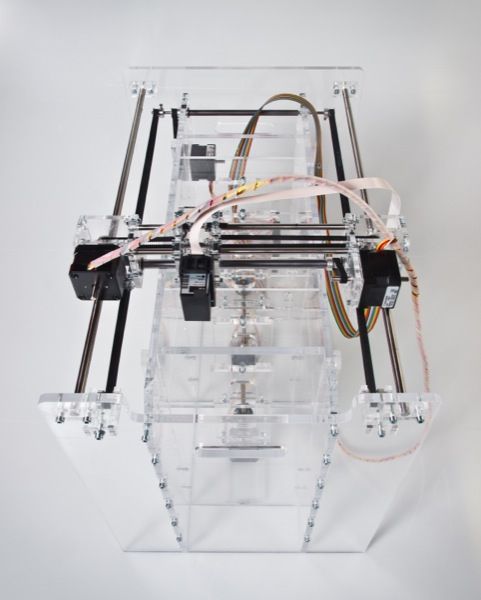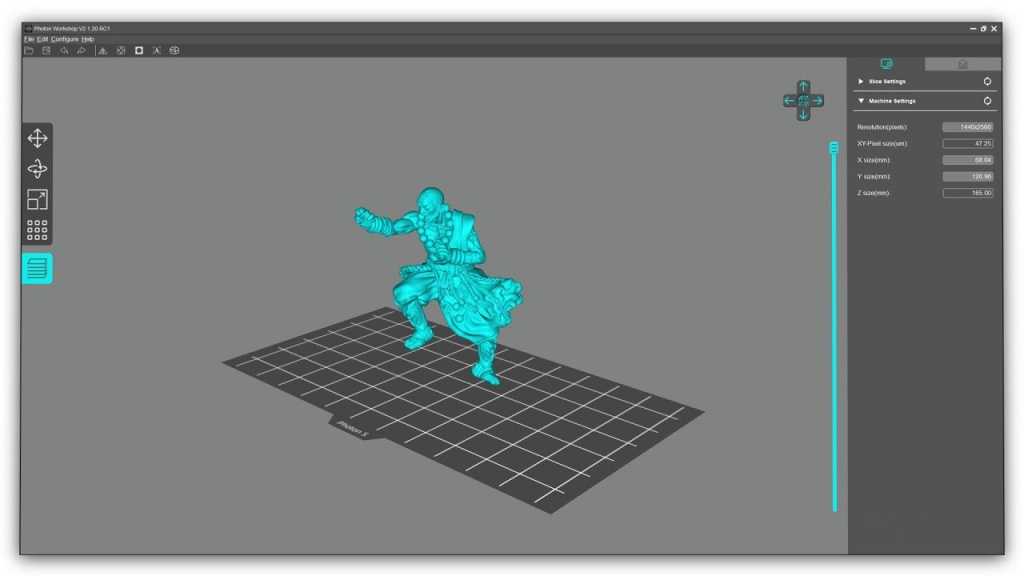The best 3d printer kit
9 Best DIY 3D Printer Kits (2023 Update)
- Last Updated: January 19, 2023
- Pat Nathaniel
If you’re a hobbyist and a tinkerer who wants to get into 3D printing, the best way is to build your own 3D printer. You can purchase and assemble DIY 3D printer kits that combine your favorite childhood pastimes with your new obsession!
The big reason for building your own printer is the cost savings associated with it.
You might wind up saving hundreds of dollars if you opt for a DIY printer.
Creality Ender 3
Build Volume: 220 x 220 x 250 mm
Get Discount (Official Store)
Check Latest Price
Creality Ender 3 Pro
Build Volume: 220 x 220 x 250 mm
Get Discount (Official Store)
Check Latest Price
Prusa i3 MK3S
Build Volume: 250 x 210 x 210 mm
Get Discount (Official Store)
Check Latest Price
Check Kit Price
The hidden advantage is how much you’ll learn about your printer while putting it together.
An excellent way to think about it is you’re trading a few hours of your time in exchange for a deep understanding of 3D printing.
Best DIY 3D Printer Kits At A Glance
Now let’s look at some of the best DIY 3D printer kits on the market. All of these are FDM-style printers, so there’s no need to worry about resin or dangerous chemicals.
- Creality Ender 3 Pro (Editor’s Choice)
- Prusa I3 MK3S (Top Pick – Best Overall)
- Creality Ender 3 (Best Value)
- Tronxy XY-2 PRO
- Tronxy X5SA Pro
- Geeetech A10
- Anet A8 Plus
- Creality CR-10 V2
- Anycubic Kossel Plus
Quick Reference Table
| 3D Printer | Volume (mm) | Resolution (μm) | Assembly time (hrs) |
| #1 Creality Ender 3 Pro | 220 x 220 x 250 | 100 | 2 |
| #2 Prusa i3 MK3S | 250 x 210 x 210 | 50 | 7 |
| #3 Creality Ender 3 | 220 x 220 x 250 | 100 | 3-6 |
| Tronxy XY-2 Pro | 255 x 255 x 260 | 100 | 3 |
| Tronxy X5SA Pro | 330 x 330 x 400 | 125 | 4 |
| Geeetech A10 | 220 x 220 x 260 | 100 | 1 |
| Anet A8 Plus | 300 x 300 x 350 | 100 | 3 |
| Creality CR-10 V2 | 300 x 300 x 400 | 50 | 1 |
| Anycubic Kossel Plus | 180 x 180 x 320 | 100 | 4 |
1.
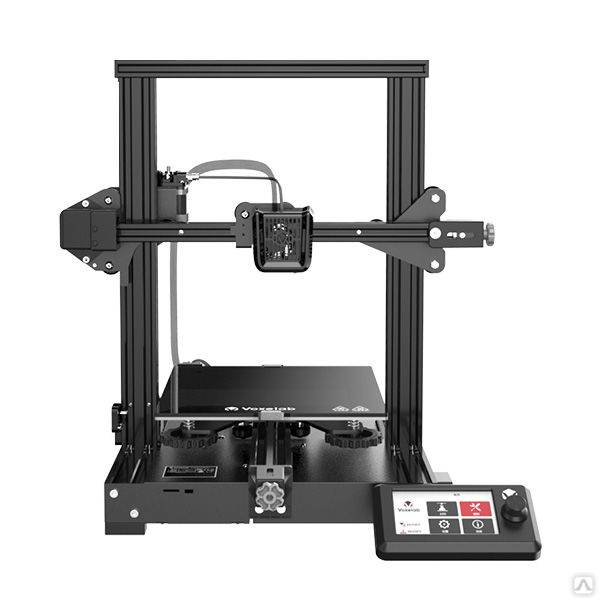 Creality Ender 3 Pro (Editor's Choice)
Creality Ender 3 Pro (Editor's Choice) The first 3D printer I’ve ever bought – the Ender 3 Pro is the big brother of the popular Ender 3.
It’s a great 3D printer if you like to tinker and modify, however, owning an Ender 3 Pro is a learning experience.
Because of it’s popularity you have the support of one of the largest communities of makers. If you need help with leveling your bed or calibrating your settings they’ve got you covered.
That said, a well-calibrated and upgraded Ender 3 Pro can go toe-to-toe with a Prusa’s print quality.
This kit is really easy to put together, and it quickly connects to your computer to make for easy printing. It took me about 2 hours to put together the semi-assembled kit following the 12-step pamphlet.
And that’s with leveling the bed too.
The big thing about this printer is how accurate and sturdy it is. It’s really hard to find another printer that can do what the Ender 3 Pro does at the same price point.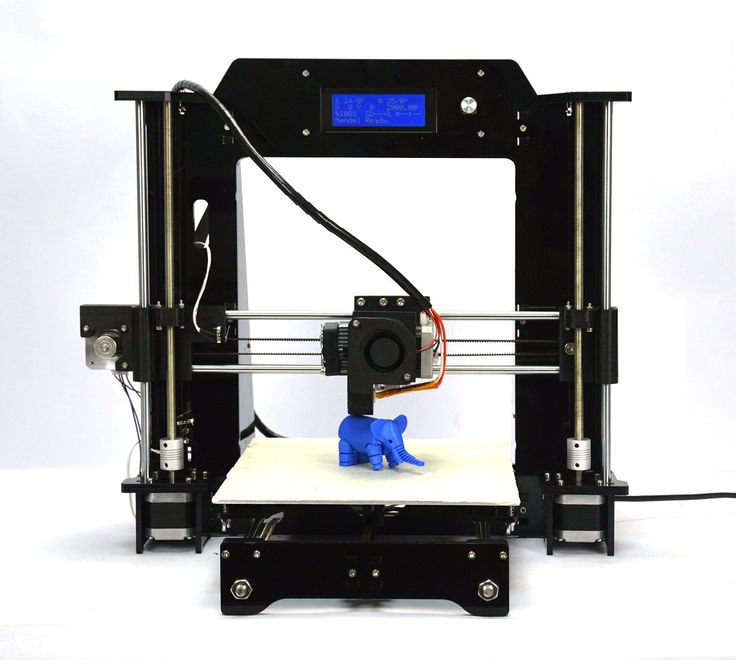
The Ender 3 Pro is the best 3D printer under $300.
The Ender 3 Pro is easy to use, has a lot of useful upgrades over the 3, and it has a decent build volume.
This printer is a great pick if you’re looking for an affordable, jack-of-all-trades type of printer, want a printer that’s easy to set up and use, and aren’t afraid to tinker around to achieve high-quality prints.
Get Discount (Official Store)
Check Latest Price
2. Prusa I3 MK3S (Best Overall - Top Pick)
If you can afford this beast, it is hands-down the best 3D printer in its class. Prusa is the company that blazed the trail for other DIY printer companies to follow. The proof is in the fact that their printer is called the “original” – it’s so good that other people use it as a skeleton to make their own.
The i3 MK3S is the most expensive kit on this list because it is fast, reliable, and super easy to use.
Compared to the Ender 3 Pro the Prusa i3 MK3S has automatic bed leveling so your prints can be beauties on the first try.
This printer also has a magnetic print bed, a new extruder, a ton of sensors, and a lot of features.
There are two versions of this printer:
- The fully assembled unit and the…
- DIY kit version
You can save over $200 if you get the DIY kit version.
It took me about 6 hours to assemble the kit. The kit comes with detailed setup instructions and you can also supplement this with more info on their site. Additionally, this printer has plenty of info available online from different forums and videos (YouTube is your friend!) that will detail exactly how to assemble it.
This 3D printer is super easy to use because of the iterations that the company has gone through to bring this printer to market. It’s worth mentioning that this printer is open source, so you can feel free to tinker and experiment with your setup.
It’s worth mentioning that this printer is open source, so you can feel free to tinker and experiment with your setup.
If you’re into exceptional print quality right out of the box then the Prusa i3 MK3S is for you. It is a reliable, well built machine that performs consistently with minimal maintenance. On the rare cases you need help or advice, Prusa also offers tech supports and a community of passionate fans.
- Check out more beginner-friendly 3D printers here
Check Official Website
Check Latest Price
Check For Kit Price
3. Creality Ender 3 (Best Value)
There’s a reason why this printer is was our #1 choice in the best 3D printer under $200 review.
No 3D printer seems to fuse quality and affordability quite like the Ender 3.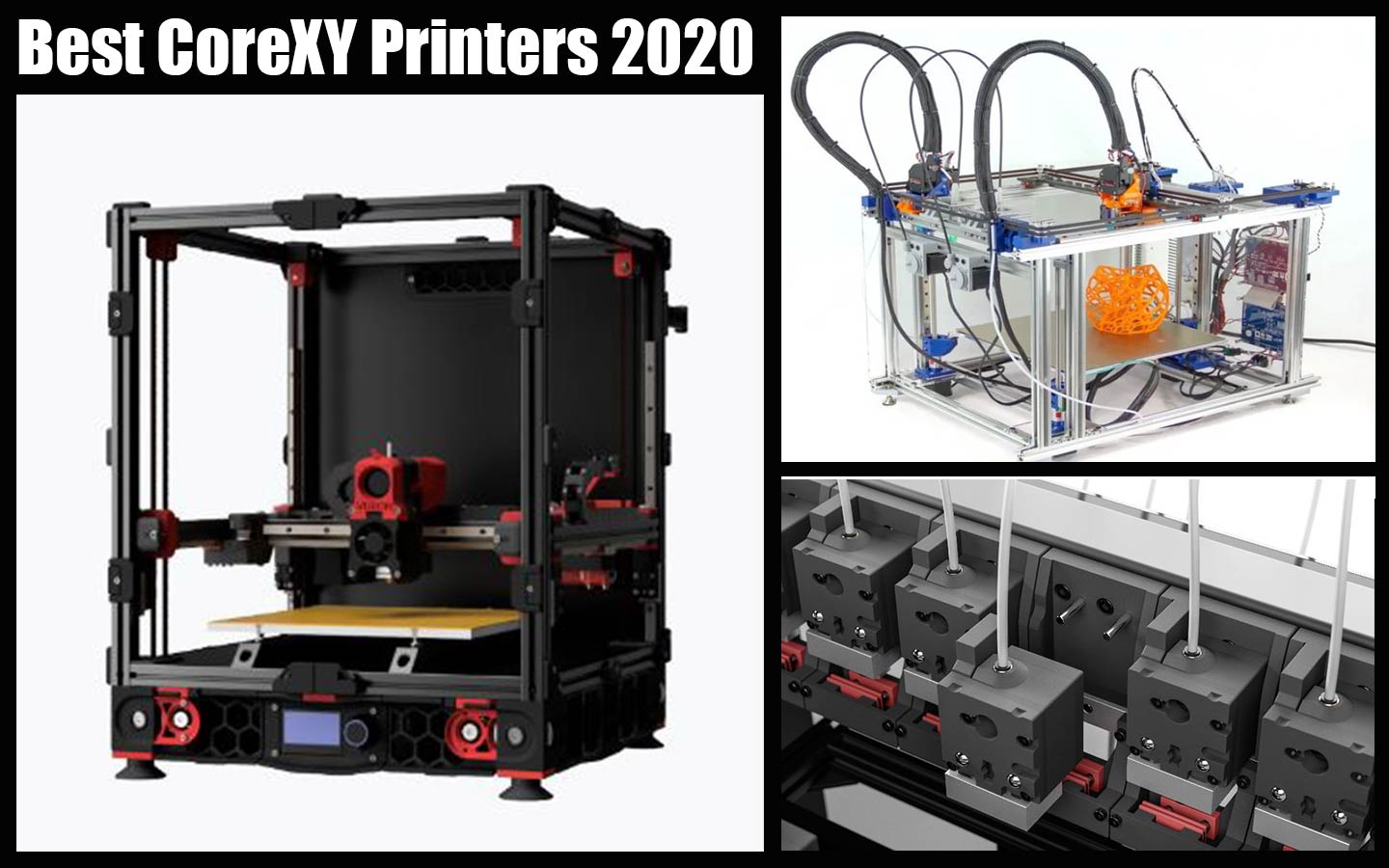 With the right settings and patience, this printer can achieve quality as good as printers 4x the price.
With the right settings and patience, this printer can achieve quality as good as printers 4x the price.
The older generation of the Ender 3, it has all the quirks you’d expect from the old guard.
Like the Ender 3 Pro, it allows you to continue printing after losing power. Likewise, the heated built plate allows for easier printing and lets you print tougher filament materials.
You can read more about the Ender 3 vs. Ender Pro here.
This 3D printer is perfect for beginners and tinkerers who want to get their hands dirty. And who want the best bang for their buck.
Get Discount (Official Store)
Check Latest Price
4. Tronxy XY-2 PRO
Next up is the XY-2 PRO from Tronxy.
It has a reasonable price tag, a good print volume, and it looks pretty cool.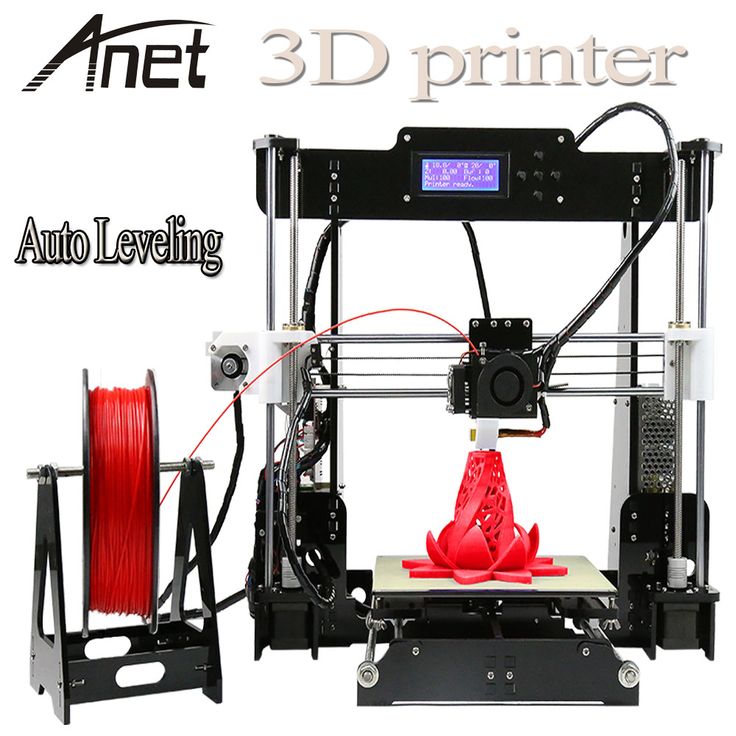 It also has a sensor that detects when you’re out of filament, and it automatically stops the print.
It also has a sensor that detects when you’re out of filament, and it automatically stops the print.
It has auto-leveling, which makes the setup for printing more convenient. As a bonus, the folks at Tronxy put a touchscreen on this printer! These features are almost unheard of from a printer at this price point.
The XY-2 PRO is one of the easiest DIY 3D printer kits to assemble and start. If you have any problems, you can refer to their included instruction manual.
If you’re still stuck, you can use your lifetime technical support that comes with every purchase of a Tronxy kit. This means that their service technicians will help you with any questions or problems you have.
Check Latest Price
5. Tronxy X5SA Pro
Looking at another printer offered from Tronxy, the X5SA Pro is an upgraded version of their smaller printer.
The build volume is enormous on this guy (in fact, the largest on this list), and the price tag is still really fair for what you get – granted it’s pricier than others on this list.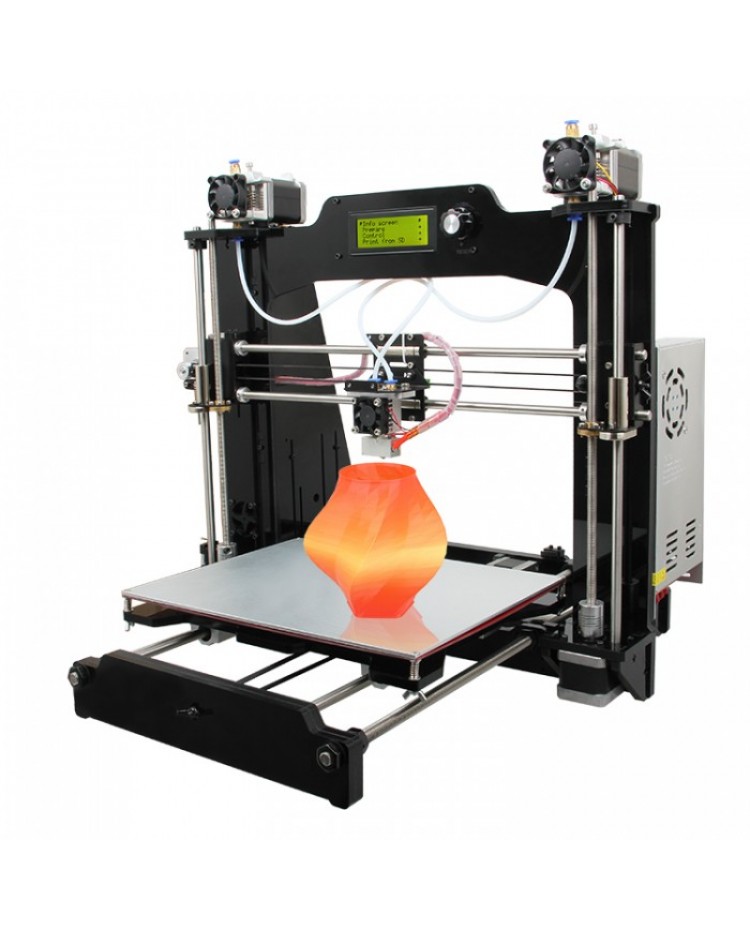
When they released the X5SA, there were some concerns that were voiced by the 3D printing community. Tronxy was quick to fix them and released the X5SA Pro with all of the fixes.
Some of the fixes include a more robust x-axis, more stability overall, better materials used for the framework, fewer vibrations, and better precision.
The assembly time is around 4 hours, and it offers the same technical support that the XY-2 PRO offers. If the price tag is shocking, compare this printer to a premade model that might cost double the price.
What you get in this printer is a reliable workhorse. It has the same great features and touchscreen that the XY-2 PRO offers, this one is just a lot larger and sturdier.
Check Latest Price
6. Geeetech A10
The A10 from Geeetech is more of a middle-of-the-road type of printer. The price, build volume, and resolution is all in the middle of this list.
It also includes a sensor for when your filament runs out, and it will allow you to print remotely.
Building it is pretty easy, too. There’s a lot of resources online to help guide you through the process. This is a good pick if you aren’t crazy about either extreme of the printers available.
If you’re looking for a DIY 3D printing kit that has a little bit of everything, the A10 is a good pick.
Check Latest Price
7. Anet A8 Plus
At first glance, you’ll notice the A8 Plus has a big build volume, a great display, and sturdy metal framework. These are the leading factors of why the price point is a little higher than others on this list.
You also get a heated build plate and a nozzle hot enough to print most commercially-available filaments. The machine is very robust and sturdy, which leads to better accuracy than the standard A8.
The wiring and assembly will take around 3 hours and isn’t that difficult based on our experience.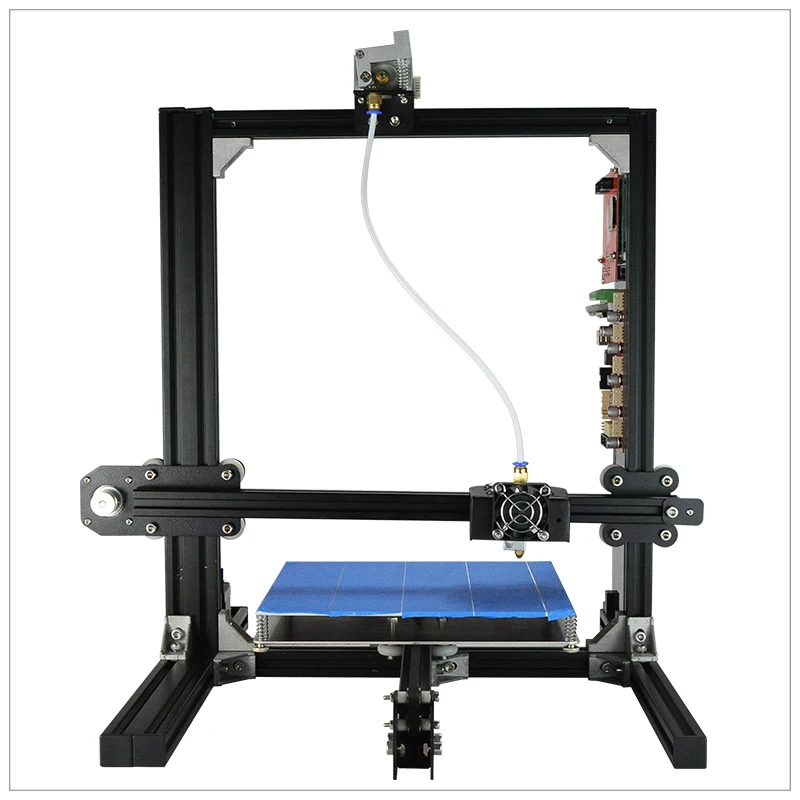 If you get stuck, there are countless posts about how to assemble and troubleshoot your machine. This is largely due to how popular the brand and printer are.
If you get stuck, there are countless posts about how to assemble and troubleshoot your machine. This is largely due to how popular the brand and printer are.
Overall this is a good pick if you are looking for a bigger printer that’s sturdy and reliable.
Check Latest Price
8. Creality CR-10 V2
You were warned, there’s more Creality on this list! This slot is reserved for the CR-10 V2 from them, their biggest and baddest version.
The build volume is massive, and the printer is sturdy. Like other Creality DIY kits, the assembly time is around an hour and is really well-explained.
So easy, in fact, it’s easy to forget that it’s a DIY kit.
A lot of people will claim that this printer is the best kit option around the $450 price range, and it’s hard to disagree.
The printer also boasts pinpoint accuracy with its prints. Overall it’s hard to find fault with this printer, and the community is in love with it.
Overall it’s hard to find fault with this printer, and the community is in love with it.
This printer is the perfect option for people who are a little more serious about their kit, people looking to print large items such as cosplay armor or props, and people who need an easy-to-use and assemble printer.
Get Discount
Check Latest Price
9. Anycubic Kossel Plus
The last printer on this list is the Kossel Plus from Anycubic. This printer might look a little funkier than the other printers, and that’s because it’s a delta printer.
These don’t work like traditional xy (or cartesian) style printers.
The benefit of a delta printer is you won’t have printing problems associated with slack in the belts.
There’s a lot to explore when it comes to delta printers. To simplify things, when it comes to DIY 3D printer kits, the Kossel Plus is the best delta option.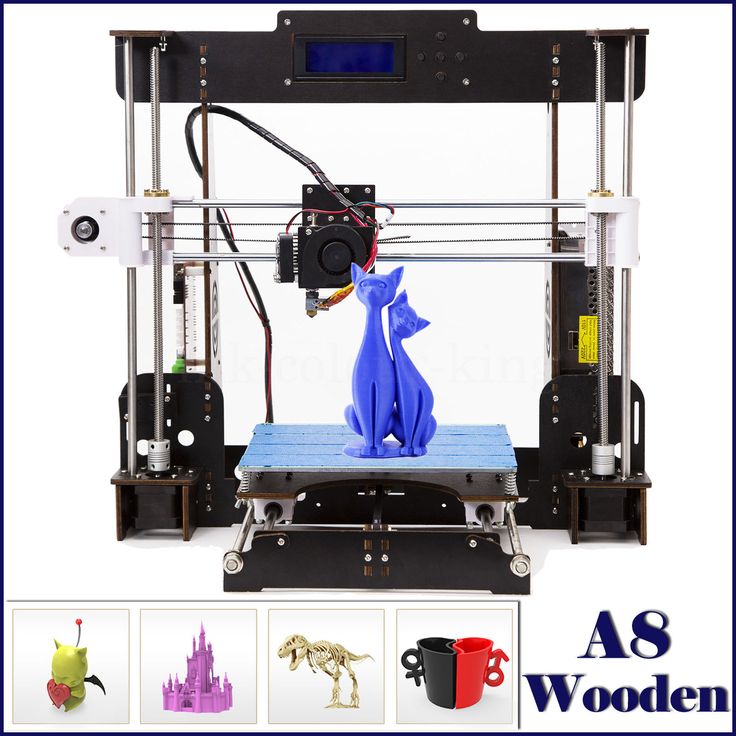
The framework is sturdy, and the assembly is really straightforward with a lot of videos and articles online about assembly.
The assembly is essentially 7 parts being put together. The extruder and heated build plate get hot enough to print almost any commercially sold filament. Kossel Plus is a very accurate unit and is a fun technology to watch print.
Overall this printer is great for anyone who wants to improve accuracy and precision in their prints. It’s also a good pick if you want a conversation piece since it’s an atypical 3D printer.
Get Discount
Check Latest Price
Why DIY Printers?The big reason for building your own printer is the cost savings associated with it. You might wind up saving hundreds of dollars if you opt for a DIY printer. The hidden advantage is how much you’ll learn about your printer while putting it together. An excellent way to think about it is you’re trading a few hours of your time in exchange for a deep understanding of 3D printing.
An excellent way to think about it is you’re trading a few hours of your time in exchange for a deep understanding of 3D printing.
The actual process of building your own 3D printer is going to vary from kit to kit. The overall idea is you’re building it from scratch and doing everything except for the coding. The kits will include all of the pieces and detailed instructions for putting them together. It’s a lot like a Lego set.
For most of the kits, you just need to screw pieces together and connect some ribbon cable between pieces. For the most part, it’s no different than building a piece of furniture from IKEA, with some added steps after for troubleshooting.
No matter which kit you decide to go with, it will come with instructions, and there will be videos and blogs online to help you along the way.
How To Choose The Right DIY 3D Printer KitAs you’re going to see soon, there’s a lot of different options for DIY 3D printer kits. So how do you pick the perfect one? Ultimately it comes down to what you’re looking for in a 3D printer. The criteria for picking a DIY 3D printer kit is the exact same as if you were to buy a printer off-the-shelf, the only difference is that you have to build these printers yourself.
So how do you pick the perfect one? Ultimately it comes down to what you’re looking for in a 3D printer. The criteria for picking a DIY 3D printer kit is the exact same as if you were to buy a printer off-the-shelf, the only difference is that you have to build these printers yourself.
You’ll see that these DIY kits have a wide range of prices, build volumes, precision, and features. Additionally, some printers have added features that lead to more convenient or reliable prints. Before you read some of the product reviews, you might want to think of some applications you’ll be using your printer for.
While you’re reading along, take a look at the highlighted features and consider if they are meaningful to you in your application. Now, there is something to keep in mind. Since these are all DIY kits, there are “assembly times” associated with each printer. This is how long it might take you from when you receive the package to when you make your first print.
Keep in mind that the printer only has to be assembled once, then it will be ready for continued use.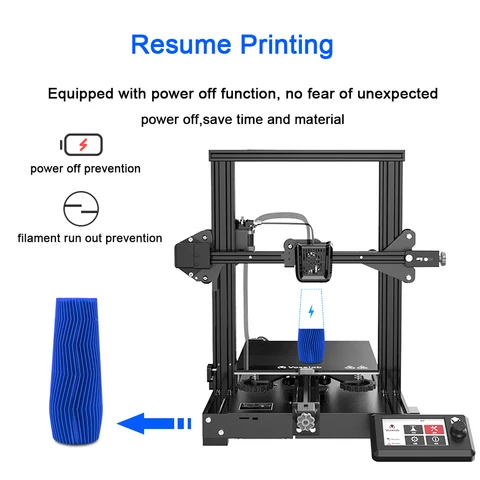 In other words, along assembly time shouldn’t deter you from buying a printer that has great specs and features that you’re looking for. Refer to our product review table and take a look at the specific reviews below!
In other words, along assembly time shouldn’t deter you from buying a printer that has great specs and features that you’re looking for. Refer to our product review table and take a look at the specific reviews below!
Our pick
Creality Ender 3 Pro
Best Overall
No 3D printer seems to fuse quality and affordability quite like the Ender 3 Pro. With the right settings and patience, this printer can achieve quality as good as printers 4x the price. Great for beginners and tinkerers.
Get Discount on Creality3D
and Amazon
ConclusionThere’s a lot to consider when it comes to picking the best DIY 3D printer kit. Hopefully, the information here will help you make the most informed decision to make sure you get exactly what you’re looking for! Keep in mind the different features and attributes that you’d prefer for your printing projects and take a look at the printers on this list to see which will best meet your needs.
Pat Nathaniel
Pat is the editor-in-chief at Printing Atoms. He has a BS in Mechanical Engineering from the University of Florida and wants to spread the word on 3D printing. When he's not writing, he likes to tinker with his Ender 3 Pro, test filament brands, and scuba dive.
Best Budget 3D Printer: 8 Great Printers at a Price You'll Love
It costs less than ever to get into 3D printing, with printers available for under $200. The catch is that these budget machines usually require some tweaking to get right. You'll save money, but it's a rough-and-tumble way to get started. The best budget 3D printers have a healthy balance between cost and usability so that's what we are looking at in this list.
3D printing -- or additive manufacturing to give it its scientific name -- has been around for a long time now. It's a fun way to create models that can be practical, or just for fun. You can print giant pieces of cosplay armor, or small statues to give as gifts. You can even buy a few printers, open your own Etsy store and make yourself a tidy profit.
You can even buy a few printers, open your own Etsy store and make yourself a tidy profit.
These budget 3D printers all cost under $500 (though prices can drift a bit month to month), and some are better suited to beginners than others. Our list of picks for the best 3D printer overall covers a much wider range of choices, but these are excellent for getting started or for buying several at once!
James Bricknell/CNET
Elegoo Neptune 2
Keep it simple
The Elegoo is one of my favorite ultra-cheap printers. When testing it, I kept expecting it to fail and it just didn't. It produced amazing results for the price, and continues to do so every time I use it. It doesn't have auto bed leveling, but the Elegoo was easy to set up. And because it's based on the popular Ender 3, it has a lot of mods available to make it even better.
$170 at Amazon
Prusa Research
Prusa Mini Plus
Small but mighty
The Mini Plus is one of the best small-footprint printers you can buy. It has everything you would expect from a Prusa machine: Auto bed leveling, crash detection and great print quality, all for under $450. Building it with my son gave us a lot of good insights into how a 3D printer works, and potentially how to fix one.
It has everything you would expect from a Prusa machine: Auto bed leveling, crash detection and great print quality, all for under $450. Building it with my son gave us a lot of good insights into how a 3D printer works, and potentially how to fix one.
$429 at Prusa Research
Creality
Creality Ender 3
Community favorite
The Ender 3 is one of the bestselling 3D printers of all time. Its under-$200 price removes a huge barrier to entry for anyone looking to spend as little as possible for their first machine.
Its popularity means there is a huge community of people to help you get it set up and working -- it's not exactly plug-and-play -- and you may need to spend a fair amount of time tweaking the Ender 3 to get it to print as well.
$189 at Amazon
You're receiving price alerts for Creality Ender 3
Anycubic
Anycubic Kobra Go
Entry level kit
The latest entry-level printer from Anycubic is surprisingly good. It comes in kit form, which gives you a chance to learn a little bit more about the machine. While that makes the setup more complicated, the printing is much easier with auto bed leveling, something I have never seen in a $200 printer. It makes everything easier, believe me.
It comes in kit form, which gives you a chance to learn a little bit more about the machine. While that makes the setup more complicated, the printing is much easier with auto bed leveling, something I have never seen in a $200 printer. It makes everything easier, believe me.
If you are looking to get into 3D printing and want to learn what each of the parts does, this is a great way to find out.
$200 at Amazon
You're receiving price alerts for Anycubic Kobra Go
Flashforge
Flashforge Finder 3
Excellent out of the box
I've recently been working with the Finder 3 and I'm impressed with the quality it was able to produce straight from the box. It is easy to set up and comes with a flexible build plate that you can replace the glass bed with. It makes it far easier to remove builds.
On my CNET torture test, the Finder 3 coped really well with overhangs, as well as the points of the towers.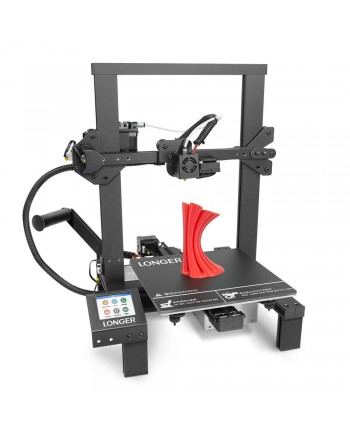 Ringing was minimal, though it did struggle with bridging.
Ringing was minimal, though it did struggle with bridging.
Overall, the Finder 3 is a great printer for the price. It's perfect for a teacher in the classroom as the enclosure makes it stable, and the slicer can control multiple printers at once via Wi-Fi.
$370 at Amazon
$390 at Flashforge
You're receiving price alerts for Flashforge Finder 3
Dan Ackerman/CNET
Creality Ender 3 S1
Direct drive with advanced features
As Dan Ackerman said in his review of the Creality Ender 3 S1 "At $399, the S1 version of the Ender-3 is about $100 more than older versions but includes so many upgrades and quality of life features that it qualifies as a great beginner-friendly, plug-and-play printer."
It's also a great budget-friendly Direct Drive printer, making it easier to use for materials such as TPU.
$349 at Amazon
You're receiving price alerts for Official Creality Ender 3 S1 3D Printer with Direct Drive Extruder CR Touch Auto Leveling High Precision Double Z-axis Screw Silent Board Printing Size 8. 6X8.6X10.6in, Upgrade Ender 3 V2 for Beginners
6X8.6X10.6in, Upgrade Ender 3 V2 for Beginners
Resin 3D printers for beginners
Most beginner printers use a plastic filament to create models, but there are plenty of affordable resin 3D printers, too. Liquid resin is a little more difficult to use than standard 3D printing material and requires safety equipment. But it also produces amazingly detailed results.
Elegoo
Elegoo Mars 3
The best starter resin printer
This small resin printer is Elegoo's latest model in its popular Mars line. Because of the 4K monochrome LCD (these printers use light from an LCD to cure liquid resin) it can print much faster than older printers. The level of detail on models is something that standard 3D printing simply can't reproduce. At this price, the Elegoo Mars 3 is the best resin printer for the money.
$274 at Amazon
You're receiving price alerts for Elegoo Mars 3
James Bricknell/CNET
Anycubic Mono X
When you need it bigger
This is expensive for a budget printer, but well worth it if you want a large enough print area to make something special.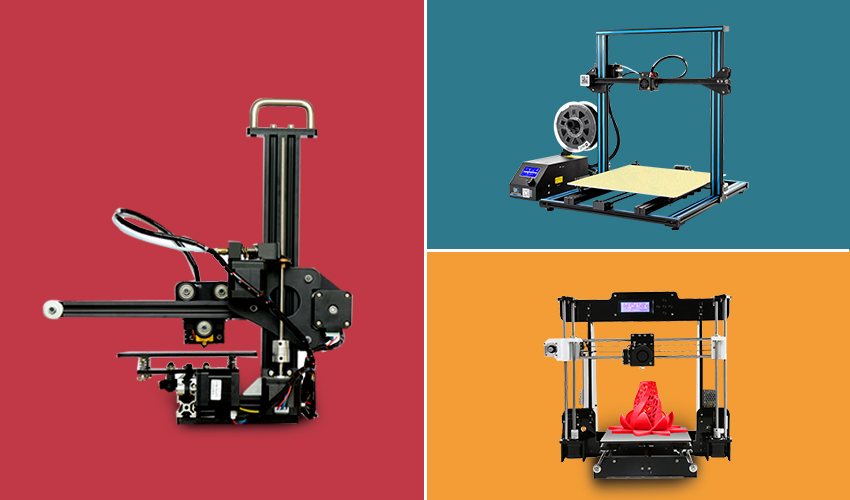 I have been using this as my main resin printer and it can handle anything I throw at it, from a D&D miniature army to highly detailed sculptures.
I have been using this as my main resin printer and it can handle anything I throw at it, from a D&D miniature army to highly detailed sculptures.
$450 at Amazon
You're receiving price alerts for Anycubic Mono X
James Bricknell/CNETFrequently asked questions
What material should I use to print with?
Most home 3D printers use PLA or ABS plastic. Professional printers can use all sorts of materials, from metal to organic filament. Some printers use a liquid resin, which is much more difficult to handle but offers sharper details. As a beginner, use PLA. It's non-toxic, made mostly of cornstarch and sugarcane, handles easily, and is inexpensive. However, it's more sensitive to heat, so don't leave your 3D prints on the dashboard of a car on a hot day.
What settings should I use?
Most 3D printers include or link to recommended software, which can handle converting 3D STL or other files into formats supported by the printer. Stick with the suggested presets to start, with one exception. I've started adding a raft, or bottom layer of filament, to nearly everything I print. It has cut down dramatically on prints that don't adhere to the bed properly, which is a common issue. If you continue to have problems, rub a standard glue stick on the print bed right before printing.
Stick with the suggested presets to start, with one exception. I've started adding a raft, or bottom layer of filament, to nearly everything I print. It has cut down dramatically on prints that don't adhere to the bed properly, which is a common issue. If you continue to have problems, rub a standard glue stick on the print bed right before printing.
What are supports?
Your 3D models probably need some help to print properly, as these printers don't do well with big overhangs -- for example, an arm sticking out from a figure. Your 3D printer software can usually automatically calculate and add supports, meaning little stands that hold up all those sticking-out parts of the model. After the print is done, clip the supports off with micro cutters and file down any nubs or rough edges with hobby files.
How we test
Testing 3D printers is an in-depth process. Printers often don't use the same materials, or even the same process to create models. I test SLA, 3D printers that use resin and light to print, and FDM, printers that melt plastic onto a plate.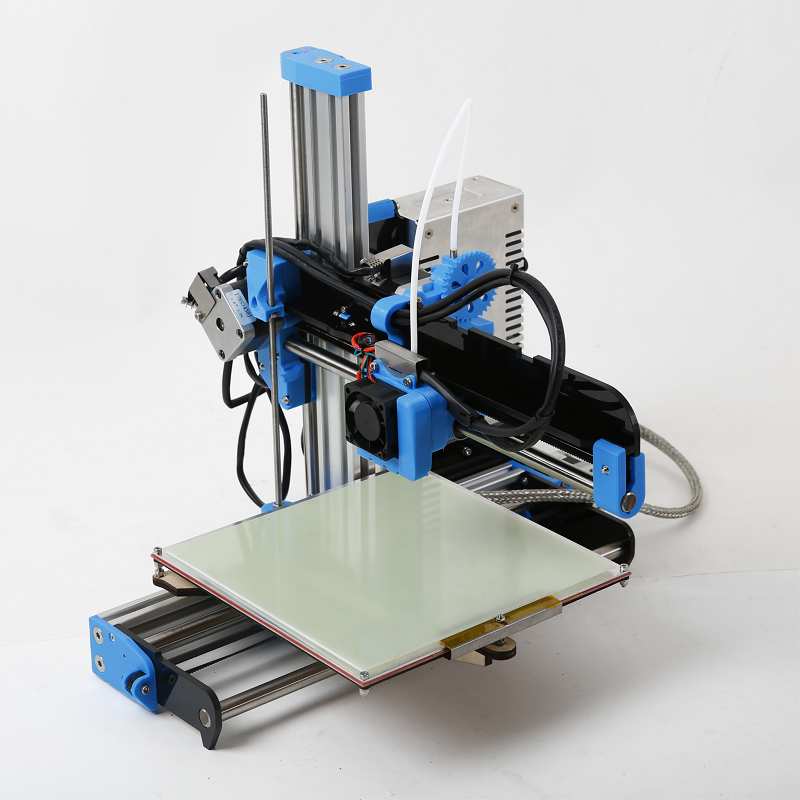 Each has a unique methodology. Core qualifiers I look at include:
Each has a unique methodology. Core qualifiers I look at include:
- Hardware quality
- Ease of setup
- Bundled software
- Appearance and accuracy of prints
- Repairability
- Company and community support
A key test print, representing the (now old) CNET logo, is used to assess how a printer bridges gaps, creates accurate shapes and deals with overhangs. It even has little towers to help measure how well the 3D printer deals with temperature ranges.
James Bricknell/CNETTesting resin requires different criteria so I use the Ameralabs standard test -- printing out a small resin model that looks like a tiny town. This helps determine how accurate the printer is, how it deals with small parts and how well the UV exposure works at different points in the model.
Many other anecdotal test prints, using different 3D models, are also run on each printer to test the longevity of the parts and how well the machine copes with various shapes.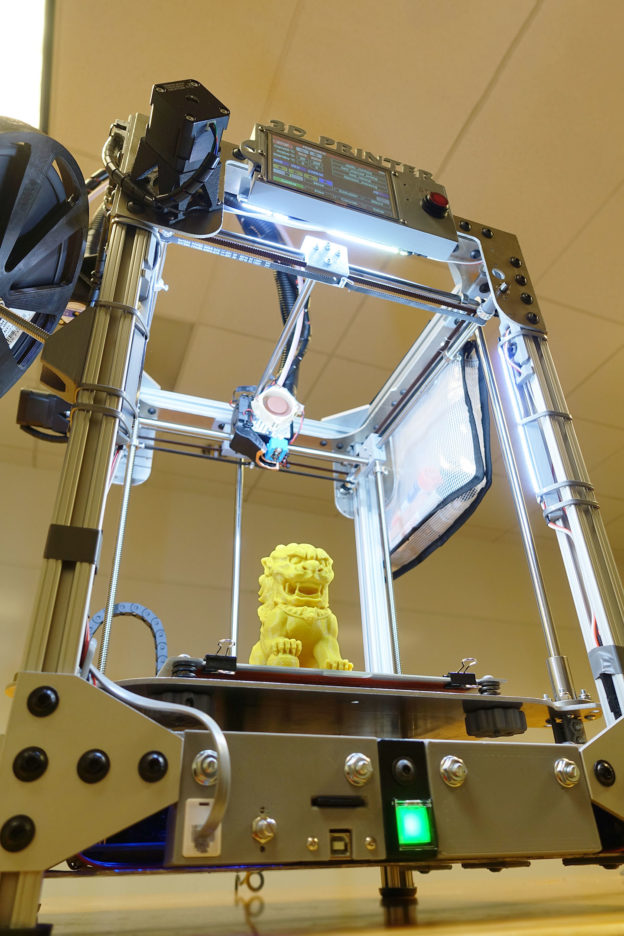
For the other criteria, I research the company to see how well it responds to support queries from customers and how easy it is to order replacement parts and install them yourself. Kits (printers that come only semi-assembled) are judged by how long, and how difficult, the assembly process is.
▶️ 3D printing best starter kit・Cults
▶️ 3D printing best starter kit
Perfect accessories for your new
3D printerYou just got your first 3D printer and want to start with a good foundation ? Here you will find 3D Printing Filament Spool Stands, Memory Card Storages, Accessories to Improve Your 3D Printer, Calibration Items... Let's heat up the extruders!
Filament clip / Universal filament clip
Free
#3DBenchy - fun 3D printing torture
Free
The Little box: Pencil pot
Free
Print indicator dial in place! - For easy bed leveling!
Free
1.
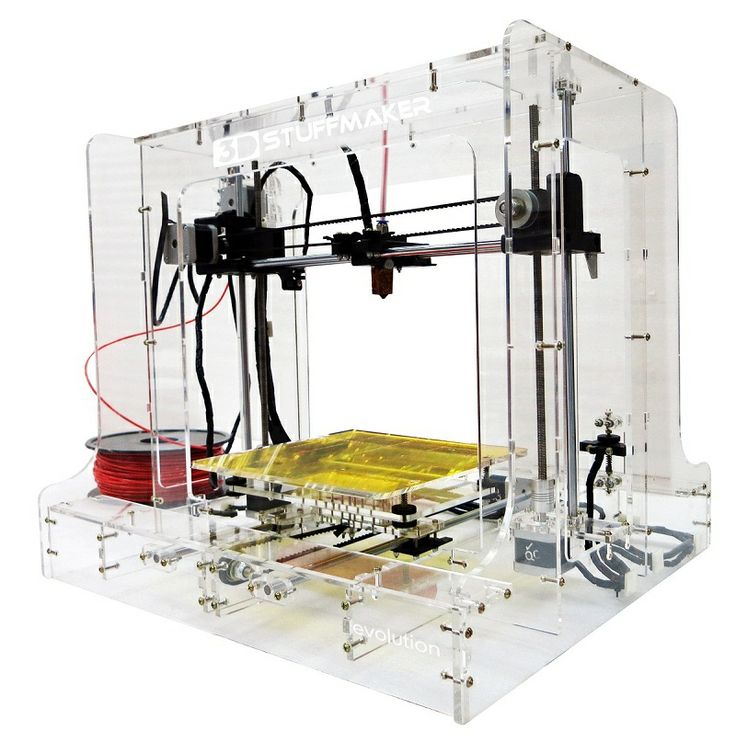 75 mm "DAS FILAMENT" Filament Clip
75 mm "DAS FILAMENT" Filament Clip Free
1.75...3.0 mm Filament Clip with filter
Free
Spool Holder / Stand for 3D Printer, 608zz Bearing
Free
SD Card Mountain
Free
FlashHog
Free
Filament Spool Stand
Free
Ultimaker 2 temperature torture calibration test
Free
USB SD and MicroSD holder for wide USB sticks
Free
Torture Spider, 3D printer torture test - overhangs - cooling - retraction
Free
Anet A8 Spool holder - reuse Anet parts
Free
bobbins
Free
Filament duck 2.
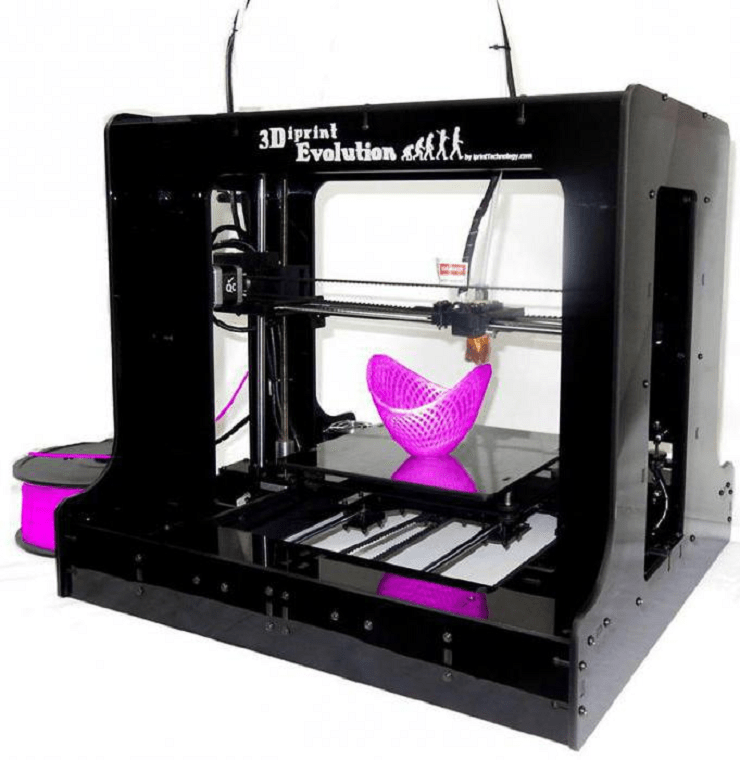 2kg spools
2kg spools Free
Simple Spool Holder
Free
Universal stand-alone filament spool holder (Fully 3D-printable)
Free
Double Clamp
Free
3D PRINTED FILAMENT SPOOL
Free
3D Printer Torture Test
Free
1.75mm Filament Clip (styled after 3D Solutech filament clips)
Free
SD Card Holder
Free
Reel unwinder - Spool Holder
Free
ColorFabb spool filament tidy
Free
FlashForge Finder 3D printer
Free
Tool Organizer
Free
Ball bearing
Free
Adjustable Spool Holder
Free
Filament Clip V2
Free
INDICATOR FOR BETTER BED LEVELING FOR ENDER 3 V2
2. 34 €
34 €
Spool holder
Free
Dagoma Discoeasy 200 Coil Holder
Free
Adjustable spool support
Free
gCreate Calibration Object
Free
SMALL - Universal Spool Holder
Free
Spiral Bed Level Test (Customizable)
Free
Desk Organizer
Free
3D-printable split filament spool with threaded joint (135 mm)
Free
3D Printing Guardian - Wall Mounted Filament Spool Holder
Free
BED LEVELING INDICATOR FOR ENDER 3 PRO
2.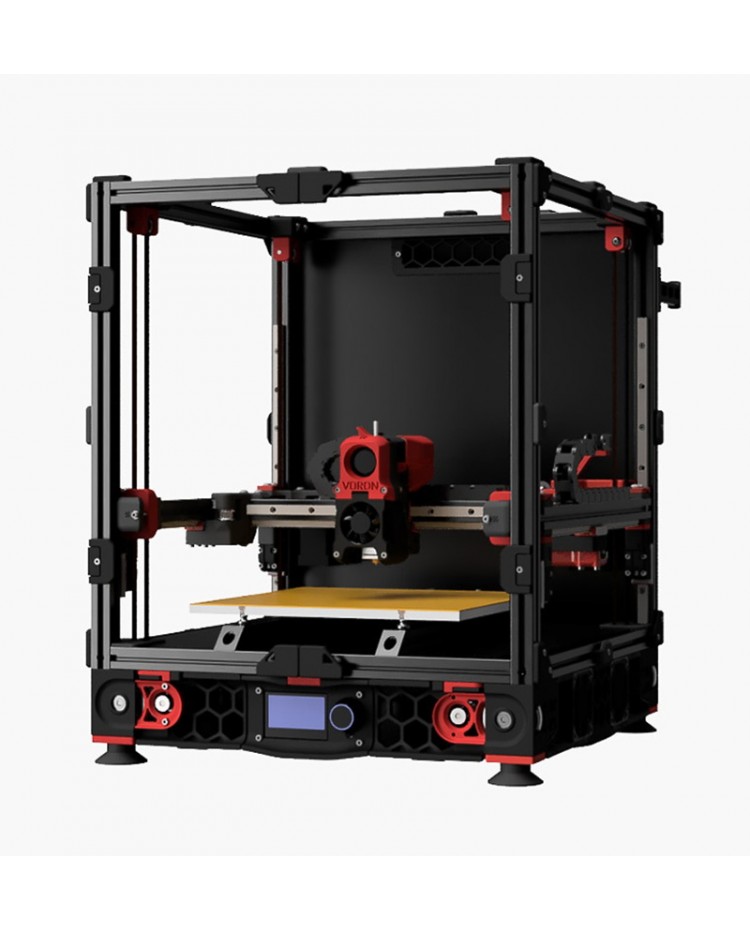 34 €
34 €
filament filter for 3D printers
Free
Curve Overhang Test
Free
Zortrax M200 Spool Holder
Free
1.75mm Filament Clip
Free
Tools holder for 3D printer
Free
Overhead Spool Holder For Closet Rod
Free
Hanging Tool Organizer
Free
INDICATOR FOR BETTER BED LEVELING FOR ENDER 3 V2
#3DBenchy - fun 3D printing torture
USB SD and MicroSD holder for wide USB sticks
The Little box: Pencil pot
Here are best STL files for getting started in 3D printing . Have you just received your first 3D printer and don't know where to start? Here is a collection that should help you. We've grouped a lot of the Cults 3D Model Library to help you get started.
Have you just received your first 3D printer and don't know where to start? Here is a collection that should help you. We've grouped a lot of the Cults 3D Model Library to help you get started.
All these free files for 3D printer will get you closer to 3D print . In fact, there are spool holders, upgrades for your 3D printer, storage for your tools and test files. These files will allow your to correctly calibrate your 3D printer.
This Starter Kit provides you with everything you need to get familiar with your new machine and organize your workspace. There are many 3D printing supplies related to your printer (adhesive tape, cutter, glue, spatula...), quickly find a place for them and organize them thanks to these 3D printer models .
Best 3D Printers of 2022 | Rating of TOP models of 3D printers for printing
Contents [Show]
The modern market of additive equipment offers many options for 3D printing equipment designed to solve various problems.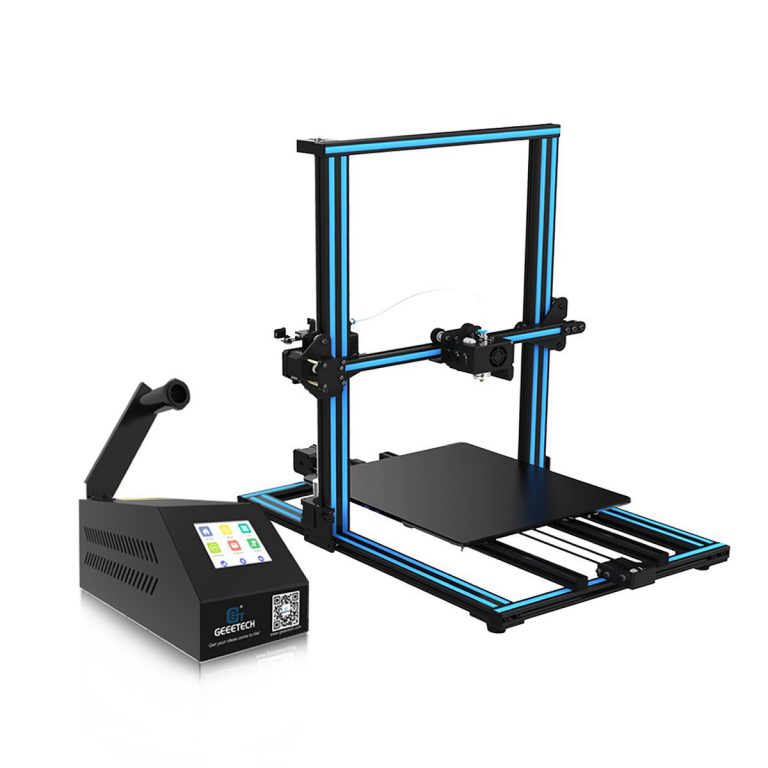 Devices are in demand in engineering and design, architecture, medicine, industry, education, entertainment, engineering and many other fields.
Devices are in demand in engineering and design, architecture, medicine, industry, education, entertainment, engineering and many other fields.
Let's talk about what you should pay attention to when choosing a 3D printer, and also consider the rating of the best equipment models for amateurs and professionals in 2022.
How to choose the right 3D printer
There are a number of basic parameters that you need to pay attention to when choosing a printer for bulk printing. Let's briefly consider each of them.
Printer type
According to the ISO / ASTM 52900: 2021 standard, approved by the International Organization for Standardization, 3D printers are divided into several categories depending on the characteristics of the printing process (for convenience, we will duplicate the trade names for each category):
- DED (SLS, MJF) - deposition and melting of material using a directed electron or laser beam.
- BJT (CJP, NPJT) - selective jet application of a binder composition to the powder for sintering.
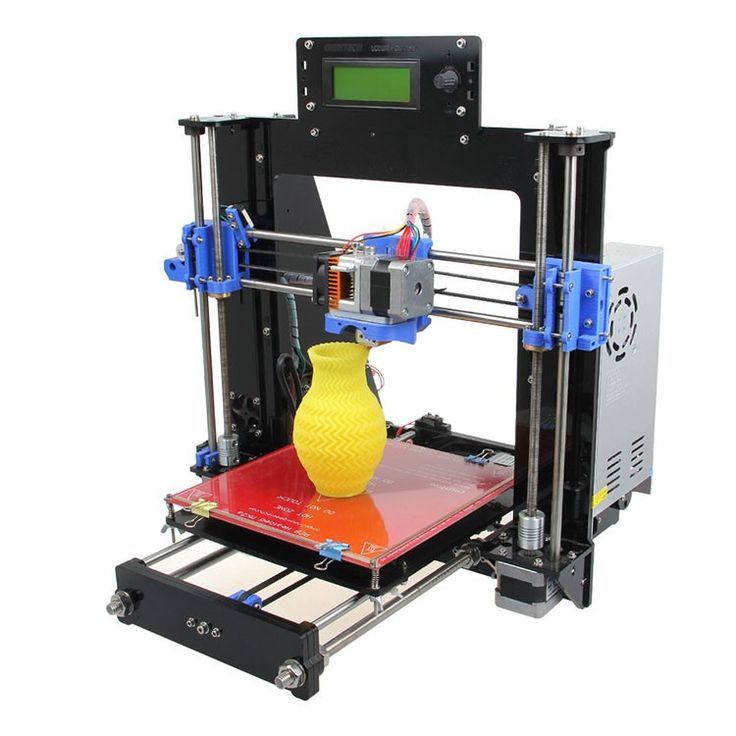
- MJT (MJP) - Layered inkjet application of photopolymer resin.
- MEX (FDM, FFF, PJP) - layer-by-layer application of the consumable through a heated nozzle (extrusion).
- VPP (SLA, DLP, LCD, CDLP) - photopolymerization, selective curing of a liquid photopolymer in a bath under the influence of a light source.
- SHL (LOM, Composite Lamination) - gluing (laminating) sheets of material.
- PBF (SLM, DMLS, EBM) - fusion of certain areas of the powder layer under the influence of thermal energy.
Approval
This parameter largely depends on the printing technology and is standardly described in the vertical and horizontal planes (Z and XY, respectively).
The Z resolution is the height/thickness of the layer. The thinner the layer, the more accurate and detailed the model will be. XY resolution is the smallest possible movement of the print head, which cannot be less than the diameter of the nozzle or laser beam.
The highest resolution is provided by photopolymer 3D printers.
Compatible materials
The choice of consumable depends on the 3D printing technology used. FDM printers use special thermoplastics in the form of filaments (PLA, HIPS, ABS, PET, PETG, Wood, Flex, etc.), while photopolymer printers use various light-sensitive liquid resins. Sintering technology devices are designed to use engineering thermoplastics or metals in powder form.
Many professional printers work with special purpose materials - composites (glass-filled materials, carbon fiber, etc.), metals, wood, concrete, ceramics, dental photopolymers, wax, etc.
Print platform (desktop, build platform)
This is the plate on which objects are printed. A high-quality platform ensures reliable adhesion of models to the surface (adhesion) during printing and at the same time makes it easy to separate them at the end of the process.
Typically, the print bed is made of glass, but other materials can also be used. To improve the contact of the material with the platform, special sprays and adhesives increase adhesion (Adhesion). Professional models of 3D printers usually have features that increase the resistance of printing to failures:
- flexible, removable or magnetic platform;
- automatic print area alignment system;
- heated platform for handling high temperature materials.
Safety
3D printing can be associated with some risks even when all safety regulations are followed. For example, high-temperature printing increases the risk of burns, and some powder materials or photopolymer resins are harmful to the skin.
To reduce the risk of exposure to toxic substances, some printers recommend the use of protective chambers, air filtration and ventilation systems, protective gloves, and goggles. There are also models of 3D printers designed to be serviced exclusively by trained personnel.
Noise level and motor drivers
Drivers and stepper motors directly affect the noise level during equipment operation. More advanced and expensive drivers, coupled with high-quality stepper motors, contribute to a significant reduction in the noise level during the printing process.
Self assembly
Most manufacturers offer additive devices that are ready to go. But some models of 3D printers are presented as self-assembly kits (DIY kits). When buying, you need to consider that assembling such a device can cause certain difficulties, especially for the first time.
Product size
The choice of the area of the working area of the equipment depends on the dimensions of the parts that are planned to be printed on a 3D printer. For a home, it is enough to purchase a device with parameters up to 200x250x200 (WxHxD). This is enough to solve most problems. For more serious tasks, we recommend considering models with a working area of at least 306x306x610 (WxHxD), such a print volume will allow you to print large objects without subsequent gluing with the same print quality and resolution.
Technology
Let's take a closer look at the main technologies used in the field of 3D printing:
- FDM is a method of layer-by-layer deposition of plastic filament threads. Ideal for creating functional prototypes and parts from high-strength industrial plastics.
- DLP - layer-by-layer curing of photopolymer resins using LED projectors. Allows you to produce ultra-precise, highly detailed objects with a high-quality surface.
- SLA - curing layers of liquid photopolymer using a laser beam. Suitable for printing very precise products with complex geometry and fine details.
Printing in different colors
There are modifications of printers that support the function of printing in two or more colors. Most of these FDM devices are equipped with two presses filled with threads of different colors. A separate file is used to print each color, and sections of different colors are combined with each other like a three-dimensional puzzle. There are also color powder printing technologies, such as CJP or MJM, but the range of their application is limited to simple layout or prototyping.
Print surface
The surface quality of finished models depends on both the technology used and the print resolution. If necessary, the products are easily amenable to post-processing.
Housing type
Volumetric printers are available in an open or closed case. Open type devices are cheaper, but may have print quality issues and shrinkage of ABS products due to temperature changes. Enclosed printers have a more rigid, stable design and deliver high quality builds because their print surface is protected from dust and other unwanted particles. In addition, they have a low noise level and are safer to operate.
Connection
The majority of modern 3D printers have built-in memory, a port for USB flash drives or are equipped with SD memory cards, which allows you to continue the 3D printing process without a permanent connection to a PC. Some devices may also support wireless technology (Wi-Fi or P2P) or connect via Ethernet. Recently, more and more manufacturers include in their devices the possibility of forming 3D printing farms from a cluster of devices connected by one local network.
Software
Additive technology comes with special software or is compatible with open-source programs that can be downloaded, for example, from the manufacturer's website. As a rule, the software runs on Windows, Linux or MacOS. The software package may include modules for optimizing 3D models, building automatic supports (supports), controlling the movement of the printing block and desktop, and advanced preparation of layers for printing.
3D printer models
Consider the different models of amateur and professional 3D printers recognized as the best in 2022.
Assembly kits
Self-assembly kits (DIY) are the most budgetary and popular variant of FDM/FFF/PJP 3D printers in Russia. The use of such kits allows you to independently assemble, configure, reconfigure and upgrade printing devices to suit your needs.
The most popular DIY kits in 2022:
Creality Ender 3
Thoughtfully designed home 3D printer with open chamber, large build area (WxHxD: 220x250x220mm) and high print quality at speeds up to 180mm/s. Works great with PLA, ABS, PETG, TPU, Wood and other plastics. Equipped with a single extruder, a heated worktable, a compact display that shows the main parameters, and an active cooling system. Suitable for printing small functional items, prototypes or decorative figurines. Connects via USB or microSD.
Flying Bear Ghost 5
Equipment for semi-professional use, equipped with an open chamber with dimensions of 255x210x210 mm. Due to the uniform supply of the filament, it allows you to produce high-resolution parts at a speed of up to 150 mm / s and an accuracy of up to 0.01 mm. The model is equipped with one extruder, a heated table, options for adjusting speed and temperature, an active cooling system and a convenient TFT color display. Compatible with HIPS, ABS, Wood, PLA, etc. Reliable, quiet operation. Connects via Usb, SD, Wi-Fi.
Creality Ender 5 Plus
A printer with a large working area (350x350x400 mm), one extruder and a filament sensor that prevents printing errors due to tangles or broken threads. It has a magnetic platform with heating up to 100 degrees in 10 minutes, a rigid, reinforced cubic frame and a reliable power supply with overheat protection. Provides fast, high-precision, stable printing with an adjustable layer thickness of 0.1-0.4mm.
Creality Ender 6
Equipment with a closed plastic case, one extruder with a heating temperature of up to 260 degrees, a color touch screen and a build area of 250x250x400 mm. Ideal for small batch production and prototyping. The printer is equipped with a heated bed, connects via SD and is compatible with most of the available filaments. The layer height is 0.1-0.4 mm.
Budget 3D printers
This category includes inexpensive, ready-to-use FDM/FFF 3D printers designed for beginners - ordinary users, students in robotics circles, schools, etc. The devices are endowed with additional options that allow you to achieve excellent results with simple, understandable operation.
The best budget models of 2022:
Anycubic Mega S
Functional equipment with a working space of 210x210x205 mm and the possibility of resuming the work process after a power outage. The device has a color touchscreen, a heated platform with Ultrabase coating, connects via data cable or SD and prints at speeds up to 100 mm/sec. Layer height - 0.05-0.3 mm.
FlashForge Adventurer 4
A good option for children or teenagers who are fond of 3D modeling. The printer has a working area of 200x200x250 mm, a heated platform, a color touch screen and is connected via USB, Ethernet or Wi-Fi. Construction speed - up to 150 mm / sec. Layer thickness - 0.1-0.4 mm. The model is also equipped with a built-in webcam, a filament end sensor, an auto-calibration function and the possibility of remote control through the application.
Voxelab Aries STEM
A printer with a full range of modern functions, designed to create objects of standard sizes (200x200x200 mm). Prints at speeds up to 80 mm/sec. and a layer thickness of 0.1-0.4 mm. Connection - Usb, SD, Wi-Fi.
QIDI i-Mate S
A device with a working space of 260x200x200 mm, connected via Usb, LAN or Wi-Fi. Layer thickness - 0.05-0.2 mm, construction speed - up to 80 mm/sec. Great for prototyping simple objects.
Budget Large Format 3D Printers
Devices designed to create a large number of small products in one go or to print large objects. These printers are equipped with a capacious platform and have increased reliability and stability.
The most popular low-cost large-format FDM 3D printers in 2022:
Wanhao D12/500
A model with an improved component base and mechanics, updated electronics, a redesigned feed mechanism, a heated platform and two extruders. Construction area - 500x500x500 mm. Layer thickness - 0.1-0.4 mm, build speed - up to 150 mm/sec. Connection - Wi-Fi, MicroSD.
Creality Ender 5 Plus
Apparatus with dimensions of the working area 350x350x400 mm. It has a robust construction with a reinforced structural profile frame and a heated platform. Provides the most accurate, stable printing and smooth, stable movement along the axes. Connected via SD. The layer height is 0.1-0.4 mm.
Creality CR-10S Pro V2
A 3D printer that delivers high performance and exceptional print stability. Ideal for creating print trusses that produce large runs of the same type of parts. Construction volume - 300x300x400 mm. Print speed - up to 180 mm / sec. (recommended speed is up to 60 mm/s). Layer height - 0.1-0.4 mm. Connection - SD.
Professional 3D printers
Professional-grade printers are designed to produce complex objects using high-temperature engineering plastics and other consumables. Such equipment has a closed chamber to maintain a certain temperature and ensure stable printing.
Best Professional FDM 3D Printers of 2022:
FlashForge Creator Pro 2
Technique with two independent extruders for simultaneous printing of two identical products. The second extruder can be used to create soluble supports for the production of complex models with a quality surface. Construction area - 200x148x150 mm. Layer height - 0.1-0.4 mm, build speed - up to 100 mm/sec. Connection - Usb, SD.
Picaso Designer Classic
A printer designed to solve a wide range of tasks. It has built-in profiles for different types of plastic, which makes it easy to start printing. Chamber size - 200x200x210 mm. Work speed - up to 100 cm3 / h, layer thickness - from 0.01 mm. Connection - Usb, Ethernet.
Anycubic 4Max Pro 2.0
Advantages of the model: dual drive extruder for working with soft, flexible plastics, filament end sensor, silent drivers, color display. The device provides the most accurate, stable printing at speeds up to 150 mm/sec. Camera dimensions - 270x210x190 mm. Layer thickness - 0.05-0.3 mm. Types of connection - Usb, SD.
QIDI Tech X-Plus
A printer with a capacious working chamber (270x200x200 mm), one extruder with a heating temperature of up to 300 degrees and a build speed of up to 150 mm/sec. Equipped with a heated platform, connects via Wi-Fi, Usb or LAN, the layer height is 0.05-0.2mm.
Professional single extruder 3D printers
Additive equipment of this kind is designed to solve various problems, from relatively simple to complex.
The most popular models of professional FDM/FFF 3D printers with one print head:
Picaso Designer X S2 (Series 2)
The main difference of this modification is the heating of the extruder up to 430 degrees, which allows working with a wide range of plastics, including engineering ones (ABS, PETG, PLA, PEEK, Nylon, Flex, etc. ). Dimensions of the working chamber - 201x201x210 mm. Connection - Usb, Ethernet. Speed - up to 150 mm / s. Layer thickness - from 10-250 microns. The printer is equipped with a heated bed.
QIDI X-Max
A 3D printer with a large printable area (300x250x300 mm) and a wide range of useful features. It has a robust design with a strong double Z-rail, a heated platform with a double-sided coating for working with different types of plastic and a 5-inch touch screen. The extruder heats up to 300 degrees. Compatible filaments - PLA, ABS, PETG, PC, Carbon, Nylon, Flex, etc. Connection type - USB storage, LAN, Wi-Fi. Working speed – up to 150 mm/sec. Layer height - 0.05-0.2 mm.
Picaso Designer XL S2
The model is designed for printing with engineering and refractory materials, as the print head heats up to 430 degrees. Robust aluminum body with steel frame guarantees reliability and no vibration during operation. Chamber size - 360x360x610 mm. Speed - up to 130 cm3 / h. Layer thickness - 10-250 microns. Connection type - USB-drive, Ethernet.
TierTime UP300
It is equipped with three separate extruders for working with different materials (low-temperature, high-temperature, standard), as well as various interchangeable platforms (smooth, perforated, glass). Supports print queue for different users. Dimensions of the working area - 205x255x225 mm, layer height - 0.05-0.4 mm. Connection - Usb, LAN, Wi-Fi.
Bizon 3
An updated version of the Bizon 2 model. Layer thickness - 0.02 - 0.65 mm. Print area size: 300x300x400mm. Print speed: up to 160 mm/s. Layer height: from 0.02 to 0.65 mm. Connection type: USB, SD card.
Mid-range large format 3D printers
This category includes models for universities, specialized colleges and offices of medium-sized companies.
The best mid-range large format FDM 3D printers in 2022:
Raise3D Pro3 Plus
Equipment with a transparent body and two extruders equipped with a lifting mechanism, well-thought-out kinematics, interchangeable nozzles of different diameters and a convenient 7-inch color touch screen. Other options: Low Filament Sensor, Print Resume System, RaiseCloud Firmware, Webcam, IdeaMaker Slicer, RaiseCloud Cloud Service. Printed volume: 300x300x605 mm (for one extruder), 255x300x605 mm (for two extruders). Connection - Wi-Fi, Usb, LAN. Speed – up to 150 mm/sec. Layer thickness - from 0.01 mm.
FlashForge Creator 4
High-performance, accurate 3D printer with a system of two independent extruders and an advanced thermal management system inside the chamber (to protect against cracking and deformation of engineering plastics). Robust steel body prevents vibration. Print area - 400x350x500 mm. Speed – up to 200 mm/sec. Layer height - from 0.01 mm. Connection - Usb, Wi-Fi, LAN.
Picaso Designer XL Pro S2
Large-format model with a working area of 360x360x610 mm, a heated platform and two extruders with a heating temperature of up to 430 degrees. The device has a simple automatic calibration, a built-in material spool drying mode and a plastic feed control system. Layer thickness - 0.01 mm, speed - up to 130 cm3/h. Connection type - Usb, Ethernet.
CreatBot D600 Pro
The printer with the largest print area is 600x600x600 mm. Equipped with two extruders with heating up to 260 and 420 degrees respectively (for working with standard or engineering plastics). Other features: heated chamber, platform and compartments, speed - up to 120 mm/s, layer thickness - from 0.05 mm. Connection type - Usb.
Professional Dual Extruder 3D Printers
Professional FDM printers with two extruders are designed to solve the most complex tasks. This technique is equipped with a fully functional slicer and a reliable nozzle lift mechanism or independent extruders.
The most popular professional grade dual extruder 3D printers:
Raise3D Pro2 Plus
The flagship model of the manufacturer, endowed with a full range of useful features. The equipment, enclosed in a transparent case, is connected via Usb, Wi-Fi or LAN and is distinguished by quiet operation. Equipped with an extruder lifting mechanism, a 7-inch color touch screen, a filament end sensor, and a print resume system. Includes RaiseCloud software, webcam, replacement nozzles. Print volume - 305x305x605 mm (for 1 extruder), 280x305x605 mm (for 2 extruders). Speed – up to 150 mm/sec. Layer height - from 0.01 mm. Connection - Usb, Wi-Fi, LAN.
Picaso Designer X Pro S2
A compact device with dimensions of the construction area of 201x201x210 mm, providing excellent print quality. It has a high temperature mode with heating up to 430 degrees for printing with complex filaments. Speed - up to 130 cm3 / h, layer thickness - from 0.01 mm. Connection - Usb, Ethernet.
Raise3D E2
High-performance 3D printer with two independent print heads (IDEX system), heated platform and print speed up to 150 mm/sec. A built-in step-by-step video instruction for site calibration is provided. Layer thickness - 0.02-0.25 mm. Connection - Usb port, Wi-Fi, LAN. Print volume - 330x240x240 mm (1 printhead), 295x240x240 mm (2 extruders).
FlashForge Creator 3 Pro
Model with a large chamber (300x250x200 mm), HEPA filter, built-in webcam, color screen and the ability to install hardened nozzles with a material melting point of up to 320 degrees. The heating speed of the working platform is up to 120 degrees in 3 minutes. Print speed - up to 150 mm / sec. Layer thickness - 0.05-0.4 mm. Connection type - Usb, Ethernet, Wi-Fi.
CreatBot F430 PEEK
3D printer ideal for PEEK and other filaments. Equipped with a closed chamber with temperature support and two printheads with heating up to 260 and 420 degrees, respectively. Construction area - 400x300x300 mm. Layer height - from 0.02 mm. Speed – up to 180 mm/sec. Connection - Usb.
Ultimaker S5
An easy-to-use device that prints with threads of non-standard diameter - 2.85 mm. The size of the working area is 330x240x300 mm. Layer thickness - from 0.02 mm. Speed - 24 mm3 / sec. Connection type - Usb, Ethernet, Wi-Fi.
Photopolymer desktop 3D printers
Modern models of 3D printing devices using photopolymers are equipped with monochrome displays with a resolution of up to 8K, which provide high speed and quality of building objects of any geometry.
Best photopolymer 3D printers of 2022:
Phrozen Sonic Mini 8K
A compact budget LCD printer with over 2000 hours of uninterrupted operation. Equipped with 8K 7.1” Mono LCD display. Print volume - 165x72x180 mm. Layer height - 0.01-0.3 mm. Resolution along the XY axis - 22 microns.
Phrozen Sonic 4K 2022
Equipment for permanent loads, ideal for dental laboratories and dental clinics. It has a heated chamber 134x75x200 mm with an odor filter and a Mono 4K 6.1” LCD display. Layer thickness - 0.01-0.3 mm.
Formlabs Form 3+
LFS printer with an intuitive interface and many special settings. The light source is a 250 mW laser. The size of the working area is 145x145x185 mm. Layer thickness - 0.025-0.3 mm.
Anycubic Mono X 6K
3D printer with a working chamber 197x122x245 mm and a high-quality Mono 6K 9.25” LCD screen. Layer height - 0.01-0.15 mm.
XYZ Part Pro 150
Equipped with a 5 inch LCD touch screen. Illumination source: 405 nm UV laser. Print area size: 150x150x200 mm. Layer thickness: 25 to 200 microns (0.025 - 0.2 mm).
Top 9 Large Format Desktop Resin 3D Printers0003
Phrozen Sonic Mega 8K
The best 3D printer in its segment, capable of solving tasks that usually only an entire farm can handle. Suitable for both mass production of small detailed products, and for printing huge objects and dioramas. It is equipped with a 15-inch Mono 8K LCD display and has a working area of 330x185x400 mm. Resolution - less than 50 microns, layer height - 0.01-0.3 mm.
Formlabs Form 3L
LFS-technique with a construction area of 335x200x300 mm, creating high-precision details using a 2x250 mW laser with a spot diameter of 85 microns.



